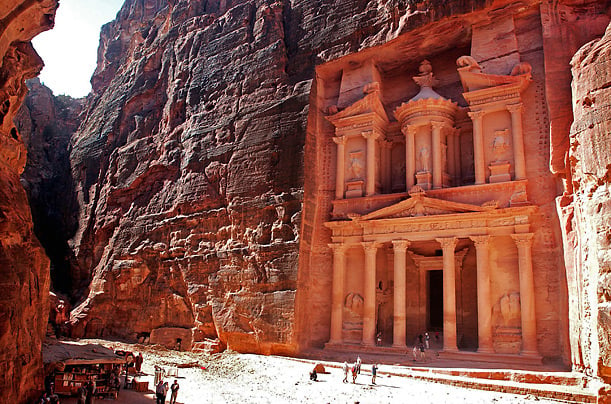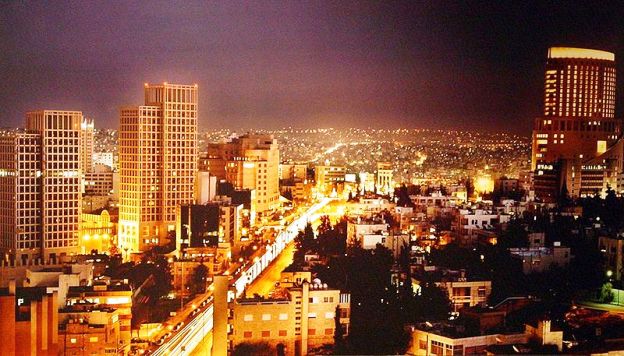Jordan is a country in the African continent, with dry and hot climate, and a great number of monuments of the past. Coming to Jordan means submersion into the old ages and history. Jordan is one of the most visited countries in Africa. The well-preserved attractions of the country include ancient cities and historical monuments. Jerash, the city of columns, is known for its two Amphitheaters, seventeen churches, several well-preserved ancient cobbled streets, framed by columns, which are made in different styles. Other cities of the Roman Decapolis are also popular.

Here are some of the Crusader castles and Mamluk fortresses, the palaces of the caliphs, and a lot of places connected with the Old and New Testaments. According to the legend, it was in Jordan that the prophet Moses saw land for the first time after wandering for 40 years in the desert, and it was here that he found his resting place.
Jordan is the true place of Jesus’ baptism in the Jordan River and the place of beheading of John the Baptist. Sulphur and mineral springs were once visited by the king Herod the Great. These olive groves, pine and palm trees, these mountains are unlike anything else in the world. Unique natural sites make Jordan an ideal place for recreation. Here, the tourists are often given an opportunity to visit Petra, which is often called in the media one of the wonders of the world. Petra is the most visited and interesting historical landmark in Jordan, included into the UNESCO World Heritage List.
Petra city remains – palaces, residential buildings, steep stairs, public buildings, cobbled streets – make a lasting impression on every visitor. There are over 800 different sites here, and the vast majority of them are entirely carved in the rock. The first settlements appeared here 4000 years ago. Today, Petra draws a vast majority of tourists visiting the region. This mysterious and fascinating place has the potential to become a destination recognized in the whole world.
Five Biblical places in Jordan have been recognized by the Vatican as the great holy places. Biblical Madaba is located 30 km south of Amman. At the heart of the city, roads and urban buildings are still preserved. The Greek Christian Church of St. George, located in Madaba, is famous for its built into the floor map of the Middle East. Cities, rivers, the Dead Sea, and the Mediterranean Sea are all displayed on the map. Madaba is often called the ‘city of mosaics’. One can also see the famous Madaba Archaeological Park, with its ruins of churches, houses and streets. One of the most visited places is Moses Memorial on Mount Nebo, which is considered to be his burial place. From the top of this high mountain one can see the Dead Sea and the Jordan Valley – the land, whereto he led his people.

One of the major attractions of the country is the Dead Sea. Some tourists come here for rest and regenerative treatment of various diseases, while others stop here during their travels around the country for a swim in the healing oily waters.
Desert Castles are the so-called remains of castles, fortresses, watch towers, and fortified palaces. The main role here is played by the castles of the Crusaders and the Umayyad palaces. They can be visited on the way to Aqaba or to the eastern regions of the country. Karak and Shobak are two medieval castles built by the Crusaders in the 12th century. Two other castles, Habis and Vueyra, are located in Petra. Ajloun castle, which served as the fortress of Saladin during the campaign against the Crusaders, also belongs to the monuments of the 12th century. Amra Qasr palace, with its murals, and Azraq castle of black basalt are just some of the great many of amazing structures.
